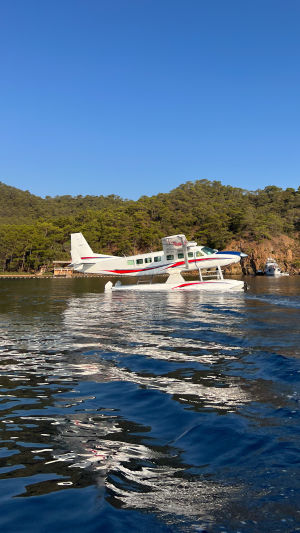Seaplanes, with their unique ability to take off and land on water, are a fascinating subset of aviation.
These aircraft, equipped with floats or hulls, offer unparalleled access to remote areas, lakes, and coastal regions.
Despite their versatility and the romantic allure associated with them, seaplanes are not a common sight in the skies. This rarity can be attributed to several factors ranging from economic and environmental considerations to technological and regulatory challenges.
<b>Historical Context and Evolution</b>
Seaplanes played a significant role during the early years of aviation. Icons like the Consolidated PBY Catalina were pivotal for maritime patrols and search and rescue operations. Their popularity waned with the advent of improved land-based aircraft and infrastructure. Today, seaplanes are primarily used for niche applications such as tourism, bush flying, and emergency services, rather than mainstream commercial aviation.
<b>Economic Considerations</b>
One of the primary reasons seaplanes are not widespread is the cost associated with their operation. Seaplanes are generally more expensive to build and maintain compared to their land-based counterparts. The amphibious designs require robust materials to withstand corrosion from saltwater, leading to higher maintenance costs. Furthermore, specialized training for pilots and crew adds to operational expenses. As a result, the economic viability of seaplane operations is often limited to high-end tourism, specialized cargo transport, or remote area access where alternatives are scarce.
<b>Technological Challenges</b>
Seaplanes face several technological hurdles that limit their widespread use. Water takeoff and landing require a smooth, expansive water surface, free from obstructions such as floating debris, which can damage the floats or hull. Additionally, rough water conditions can pose significant risks during landing and takeoff. Advances in land-based aviation technology have outpaced those in seaplane design, making conventional aircraft more efficient and reliable for most purposes.
<b>Regulatory and Environmental Factors</b>
Regulatory hurdles also play a crucial role in the limited use of seaplanes. Airports are subject to stringent regulations, but so are water aerodromes, which must comply with both aviation and maritime laws. The dual nature of seaplanes necessitates complex navigation through a maze of regulations concerning environmental protection, water use rights, and public safety. For instance, noise pollution and the potential impact on aquatic ecosystems are significant concerns that can restrict seaplane operations in populated or environmentally sensitive areas.
<b>Environmental Impact</b>
Environmental considerations further complicate the widespread adoption of seaplanes. Operating in delicate ecosystems like lakes and coastal areas can disrupt wildlife habitats and lead to pollution. Fuel spills and exhaust emissions pose risks to water quality, and the presence of seaplanes can disturb breeding grounds for birds and marine life. Consequently, environmental regulations often restrict the areas where seaplanes can operate, limiting their practicality.
<b>Limited Market Demand</b>
The market demand for seaplanes is another limiting factor. While they offer unique advantages for specific applications, the overall demand remains niche. Most commercial aviation needs are met more efficiently by land-based aircraft, which benefit from established infrastructure, higher speeds, and greater cargo capacities. The tourism sector, one of the primary users of seaplanes, represents a relatively small portion of the aviation market, further constraining widespread adoption.
<b>Alternative Technologies</b>
The rise of alternative technologies and transportation methods also impacts the prevalence of seaplanes. Helicopters, for example, provide vertical takeoff and landing capabilities without the need for water runways, making them more versatile in many scenarios where seaplanes might otherwise be used. Additionally, advancements in drone technology and the potential for electric vertical takeoff and landing (eVTOL) aircraft promise to offer new solutions for accessing remote areas, potentially overshadowing the niche that seaplanes currently occupy.
Seaplanes remain a specialized and intriguing part of the aviation world, but several factors hinder their common use. High operational costs, technological challenges, stringent regulations, environmental concerns, limited market demand, and the advent of alternative technologies all contribute to their relative rarity. While seaplanes offer unique advantages in specific scenarios, their role in the broader aviation landscape remains niche. As technology and regulatory environments continue to evolve, it will be interesting to see if seaplanes can overcome these hurdles and find new niches or if they will remain a romantic relic of aviation history.





